
There really isn’t anything like it. Being out in the desert during the month of January, bowhunting coues deer. While the rest of the country is hibernating and huddled by a fire, the lucky ones are glassing for coues deer, laying their wits on the table. And hopefully at the end some coues venison on the table as well.
Spot and stalking coues deer with a bow is no easy feat though. In all honesty, they are one of the hardest animals in North America to consistently stalk successfully. Their switched-on nature puts them on high alert at all times and the country they live in is as loud as you’d never want it to be.
With all of that said, and with the month of January fast approaching, I’m going to lay out a sort of blueprint that will no doubt up your spot and stalk success on these little deer. I’ll go into where I’ve found success, where I haven’t, and how I’ve found success bowhunting rutting coues deer.
The first thing we need to figure out here in order to start dropping stalks on bucks is how to find bucks. And let me be more specific here by saying “how to find deer.” That is key during the rut, as bucks are going to be focused on does.
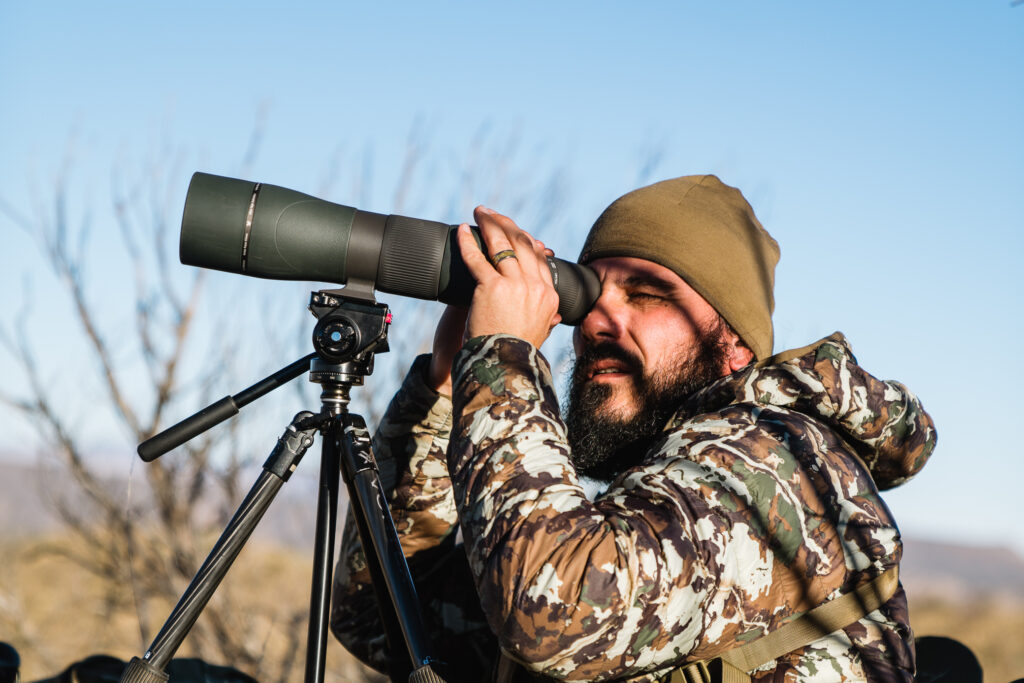
Hands down the absolute best way that I’ve found coues deer is by sitting high on a vantage point with optics mounted on a tripod and grid searching the surrounding country. These deer are incredibly hard to spot and melt into their environment. So, having those optics mounted on a tripod is an absolute must, because it ups your ability to see movement.
In terms of what optics to bring, I prefer running a 10×42 binocular and will carry a 65mm spotting scope in my pack as well. The 10×42 allows for quick handheld glassing when it’s needed and rides well in my chest harness. It also provides enough magnification to really reach out there once on a tripod too. When I do find deer, I’ll pull my spotting scope out for an even closer look.
I want to stress something here before moving on. Deer sign still matters. Each year that goes by it seems that less and less time is spent learning and recognizing animal sign. Some of my best spots for bowhunting coues deer I found by not seeing deer, but by finding sign and then setting up to glass that area. Know what tracks look like, rub lines, scrapes, beds, etc.
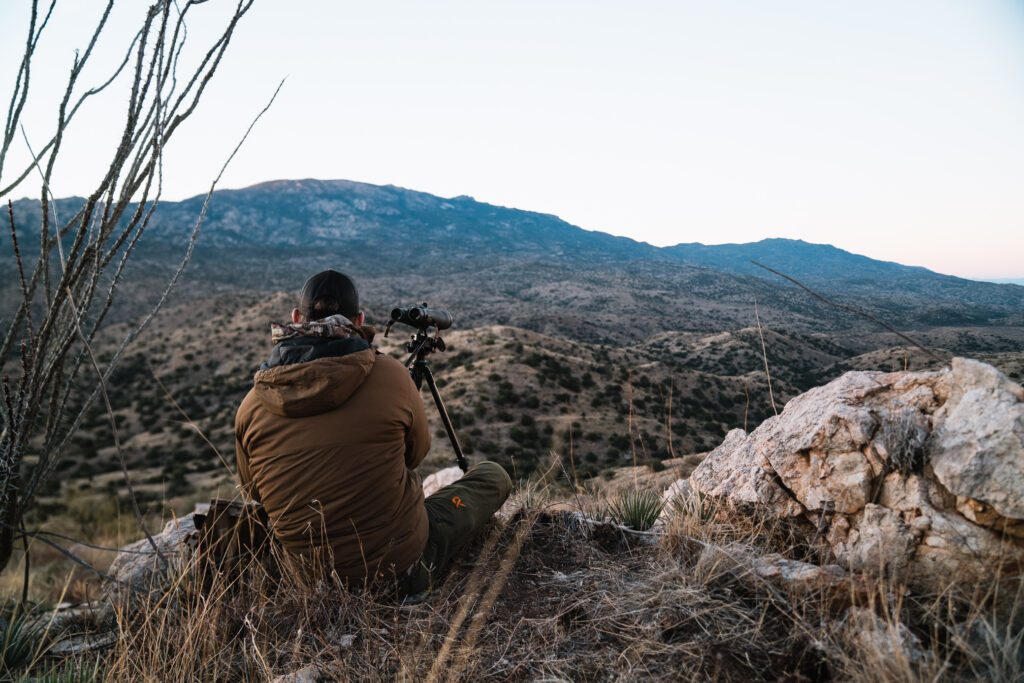
Having the right glassing gear is one thing. Knowing where and how to use it is another.
A general rule of thumb for where to glass is to put the sun at your back in the morning and look into the sun in the evening. This translates into looking at sunny hillsides in the morning and shaded hillsides after the fact. Deer will be up feeding on these sunny hills first thing and then will be coming out of shaded bedding areas in the evening. Rules are made to be broken though.
The above-mentioned absolutely works and you’ll find deer doing that. My favorite type of set up though is long north-south ridges that have fingers coming down off of them. And more particularly looking at the east face of that ridge.
The east face will be lit by the morning light because the sun comes up in the east. And those fingers will have a north and south side to them. The south side will generally be more open and the north side will generally be denser. This allows a hunter to literally watch deer go back and forth from feeding to bedding. I don’t always have that setup, but when I do, it seems to always work out.
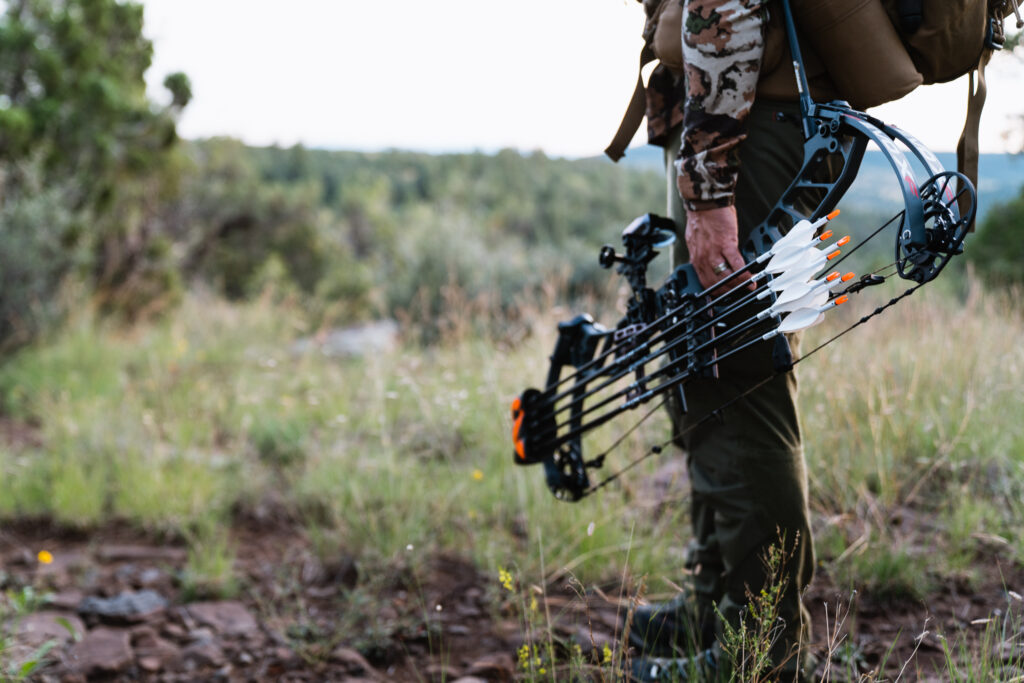
Probably the number one hang-up with spot and stalk bowhunting coues deer, is when to actually make a move and go after them. Folks mentally juggle going after them now, waiting for them to bed down, or just continuing to watch and see what they do. Paralysis by analysis is a real thing and will get the best of you. Through an uncountable amount of trial and error trying all of the above, I have formed my own opinion on what works and what doesn’t work.
You are hunting during the rut. The bucks are being aggressive and don’t stay bedded long at all. So, the most productive way that I’ve found to get shot opportunities is by being aggressive and getting over there. When I stopped being so timid is when I started killing coues bucks regularly with my bow. Whereas before that I’d sit and overanalyze a situation and never make a move. I’d wait for them to bed, only for them to not be there when I got there. And I’d fail to recognize an opportunity.
Now, I will admit, recognizing that opportunity takes some practice, as does everything in this article. Recognizing stalking approaches, using topography to your advantage, reading the wind, reading deer behavior, and so on. It all takes a trained eye for successfully bowhunting coues deer.
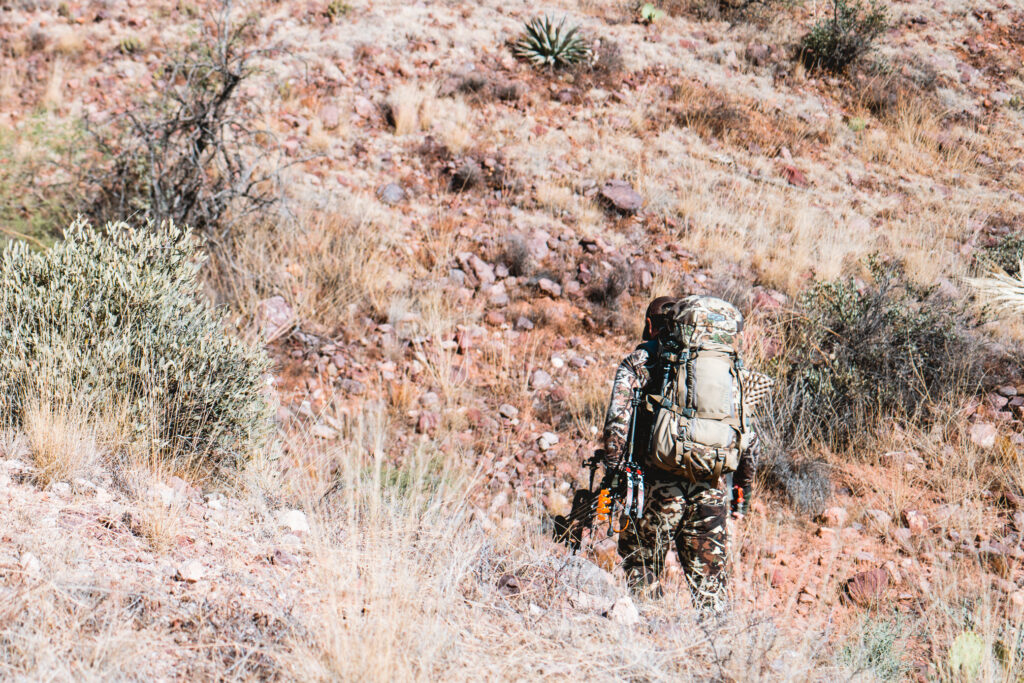
You’ve found a buck and are ready to make an approach. How to go about doing that is a question that plagues many. With a few simple things in mind, you’ll make regular approaches on deer, and do it successfully.
Above all else, the wind needs to be taken into account for a successful approach. The wind can ruin your stalk before you even see the deer, so take note of it and live by it. Aside from where you’re standing, glassing grass over by the deer will give a good idea of what the wind is doing there. The direction of heat waves will do the same. I religiously will use a “windicator” along my stalk to keep tabs on the wind as well.
Does are a buck’s main focus during the rut. While bucks are a wild card, does are not. They are on a pattern and are fairly predictable. You can use this lust paired with the does day to day to your advantage. Getting in front of their path of travel or setting up near a doe bedding area are great ways to kill a buck. You know the does will be there and the buck won’t drift far.
Topography is your friend. Using the natural draws, ridges, and vegetation is the ticket to getting close to deer without being seen. Study the landscape carefully before making an approach. Pick a route that favors the wind and gives the least chance of you being seen. Don’t deter from that either. This is not a time to get lazy. No shortcuts.
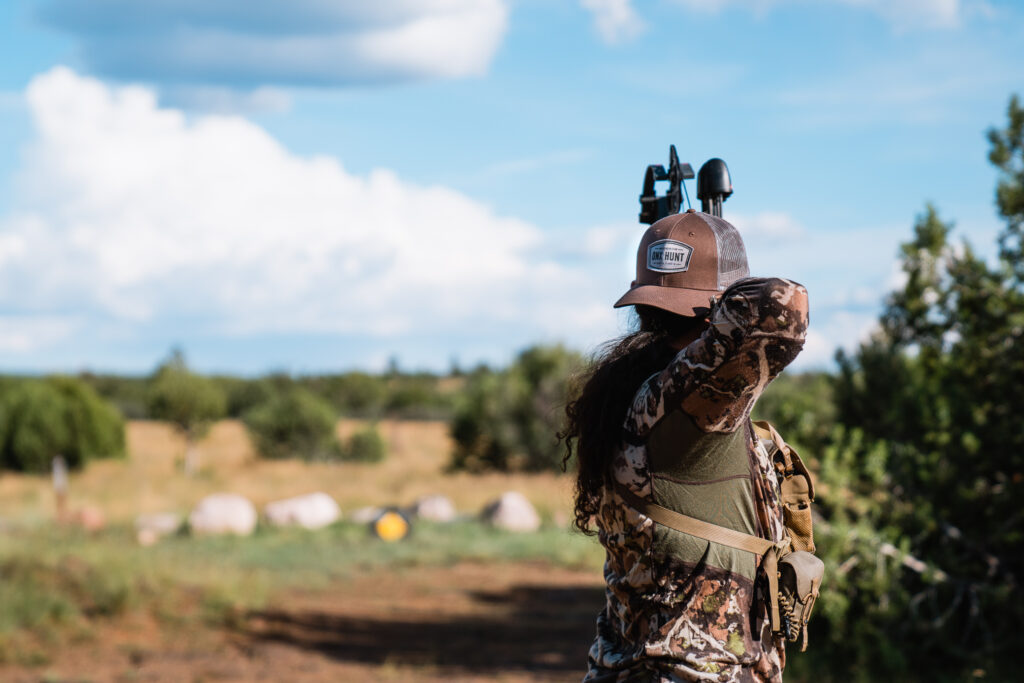
Lastly, increasing your effective shooting range will ultimately increase your chances of killing a coues buck. I’m not telling you to drift beyond the realm of what is ethical. I’m just telling you to get better at shooting. I’ve killed coues deer at 15 yards and also north of 80 yards. I’d say be ready for at least a 60-yard shot. Be proficient there too. Not one in three arrows in a pie plate. All three in a softball would be better.
I realize that not everyone can shoot like that. If you can’t, then I’d say stick to your guns and be honest with yourself. Don’t shoot past your effective shooting range. Just realize you’ve got a much steeper climb to success.
Also, I’d highly consider ambush hunting. It 100% works for coues deer as they love walking in their own tracks. Sitting on water, trail crossings, etc. is a great way to kill a coues deer. And it will offer you a much shorter shot more often.
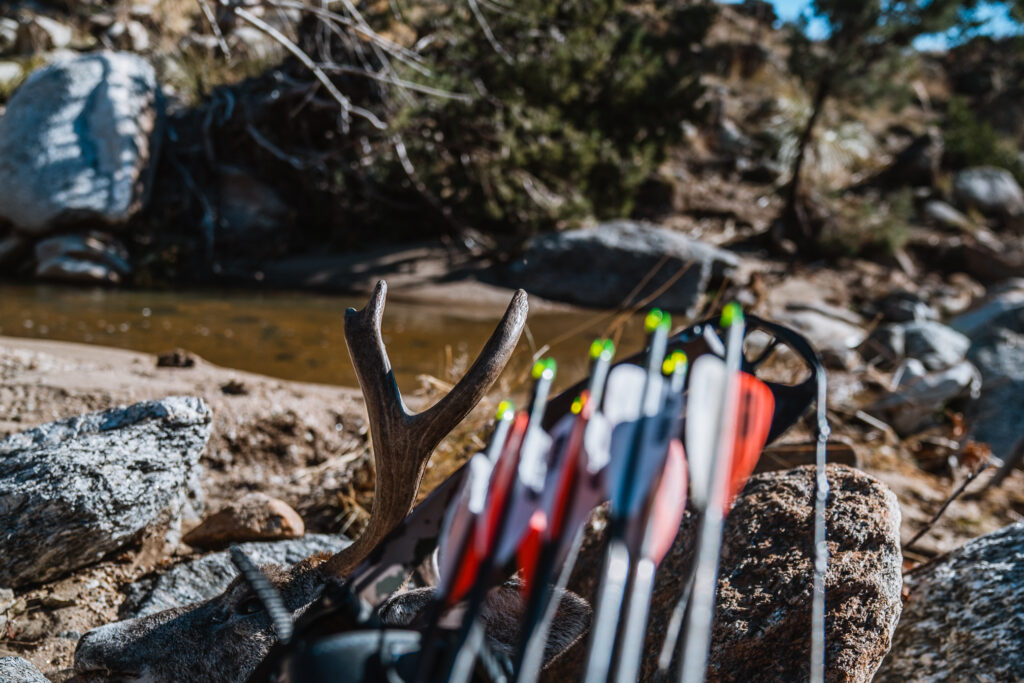
I’m getting ready to shove off here in the next few weeks for coues camp. It’s always a gas and spending time with great friends out there never gets old. Not to mention, the deer hunting is great. Challenging yes. But great. The tips above are ones that I’ve learned through the years and have helped fill my freezer with coues meat consistently. With any luck, they’ll do the same for you. Good luck out there in cactus country.
As an Amazon Associate, I earn from qualifying purchases
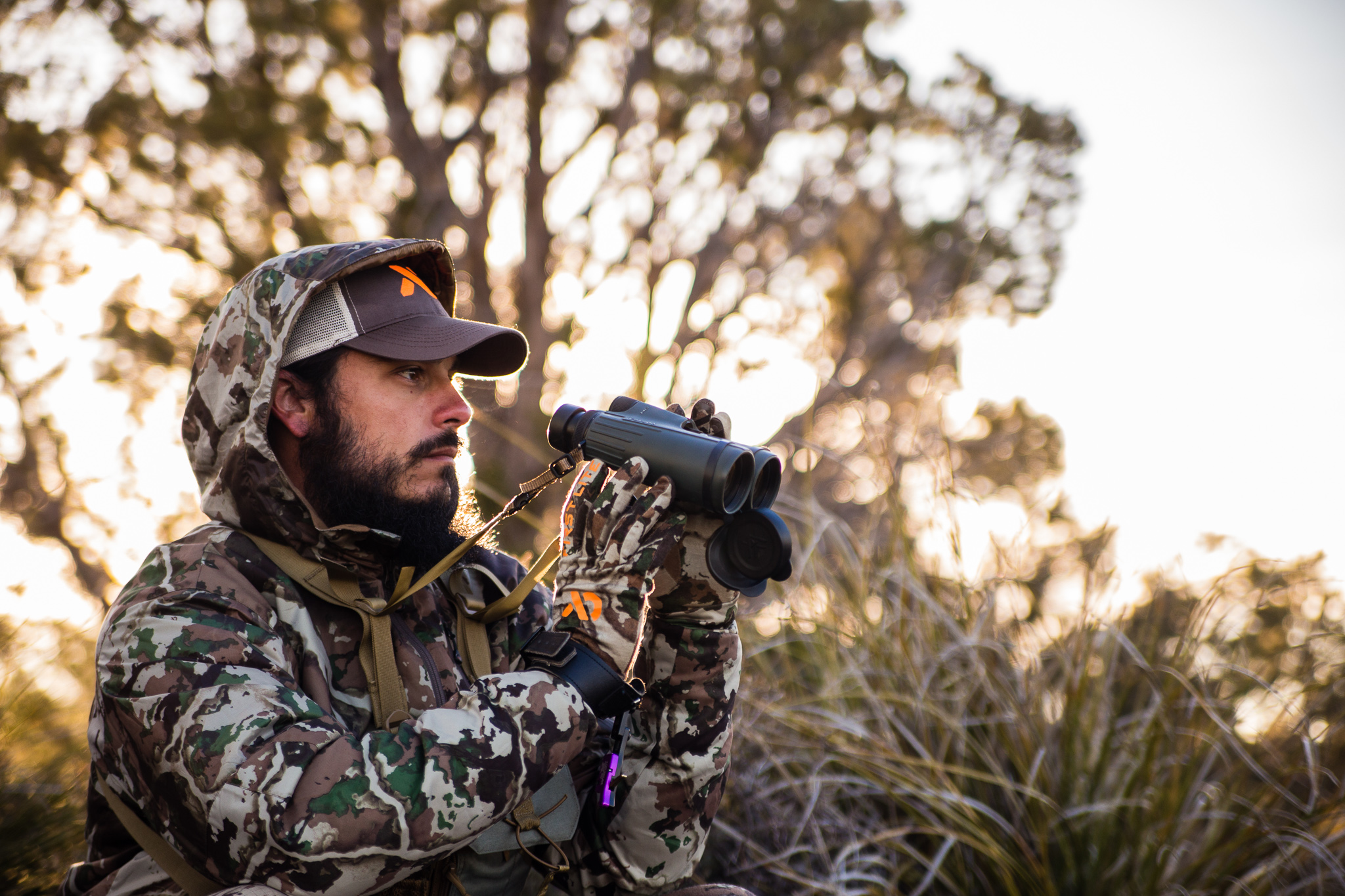

Copyright 2019 Dialed In Hunter
Design by NXNW.